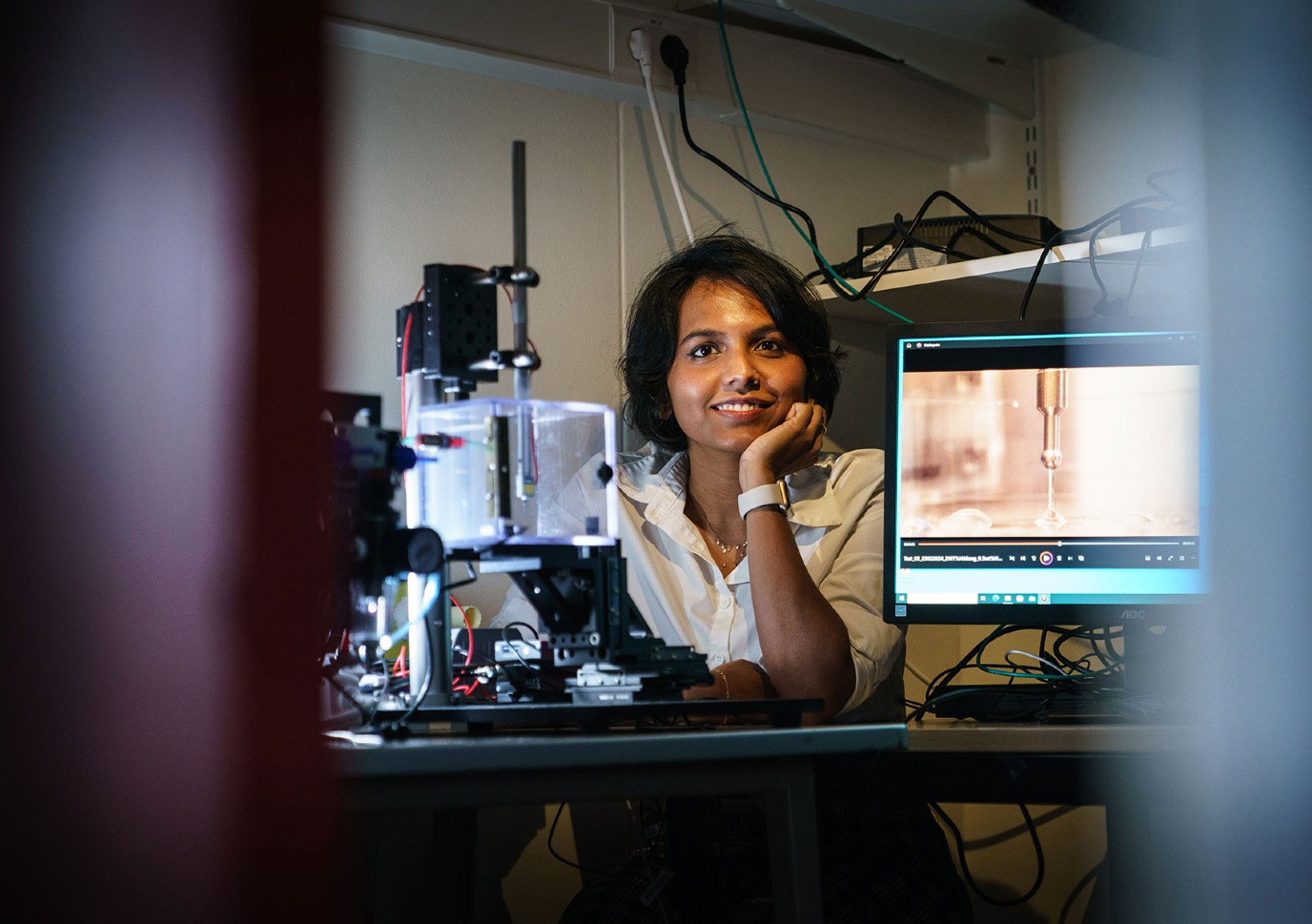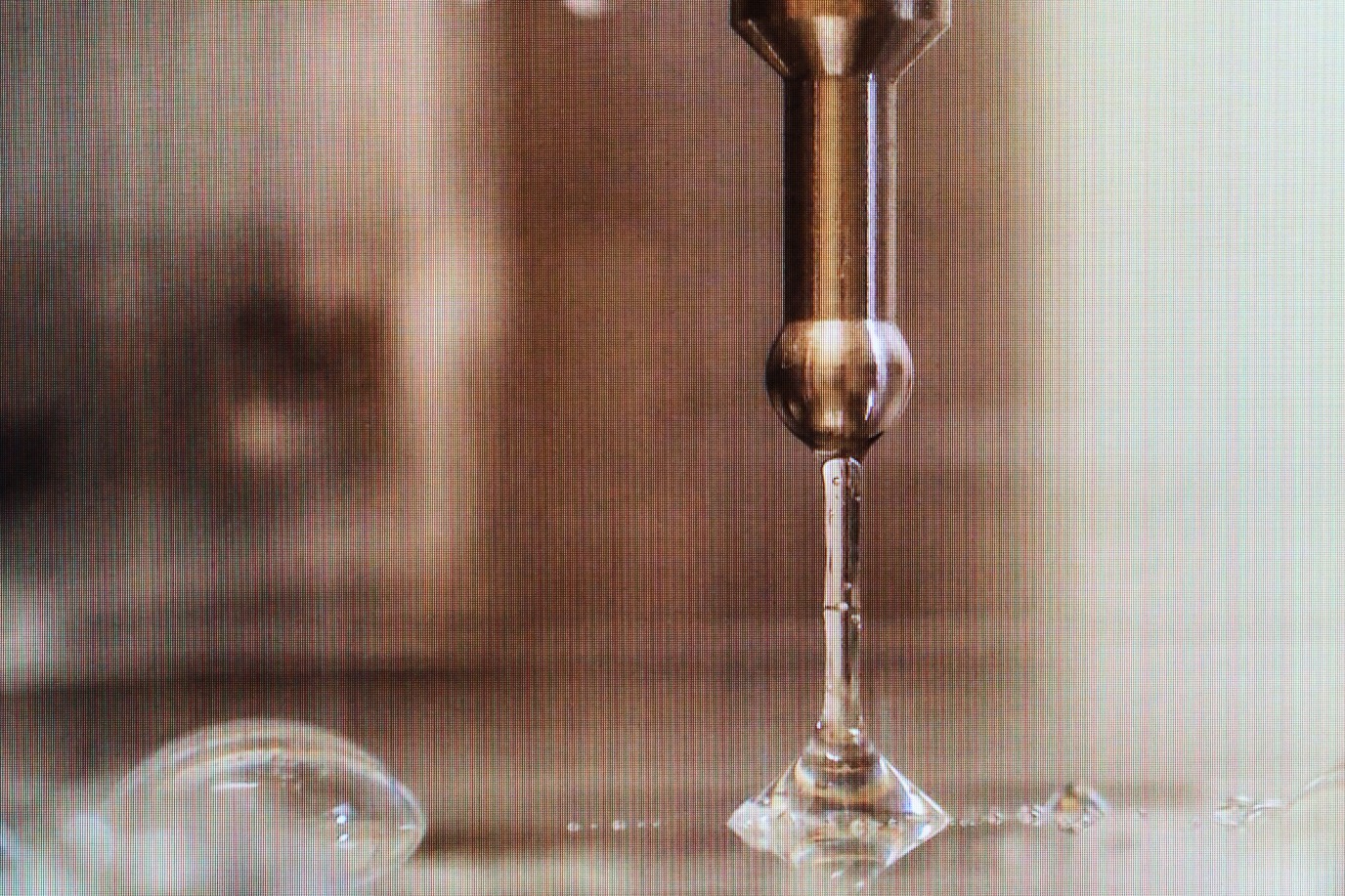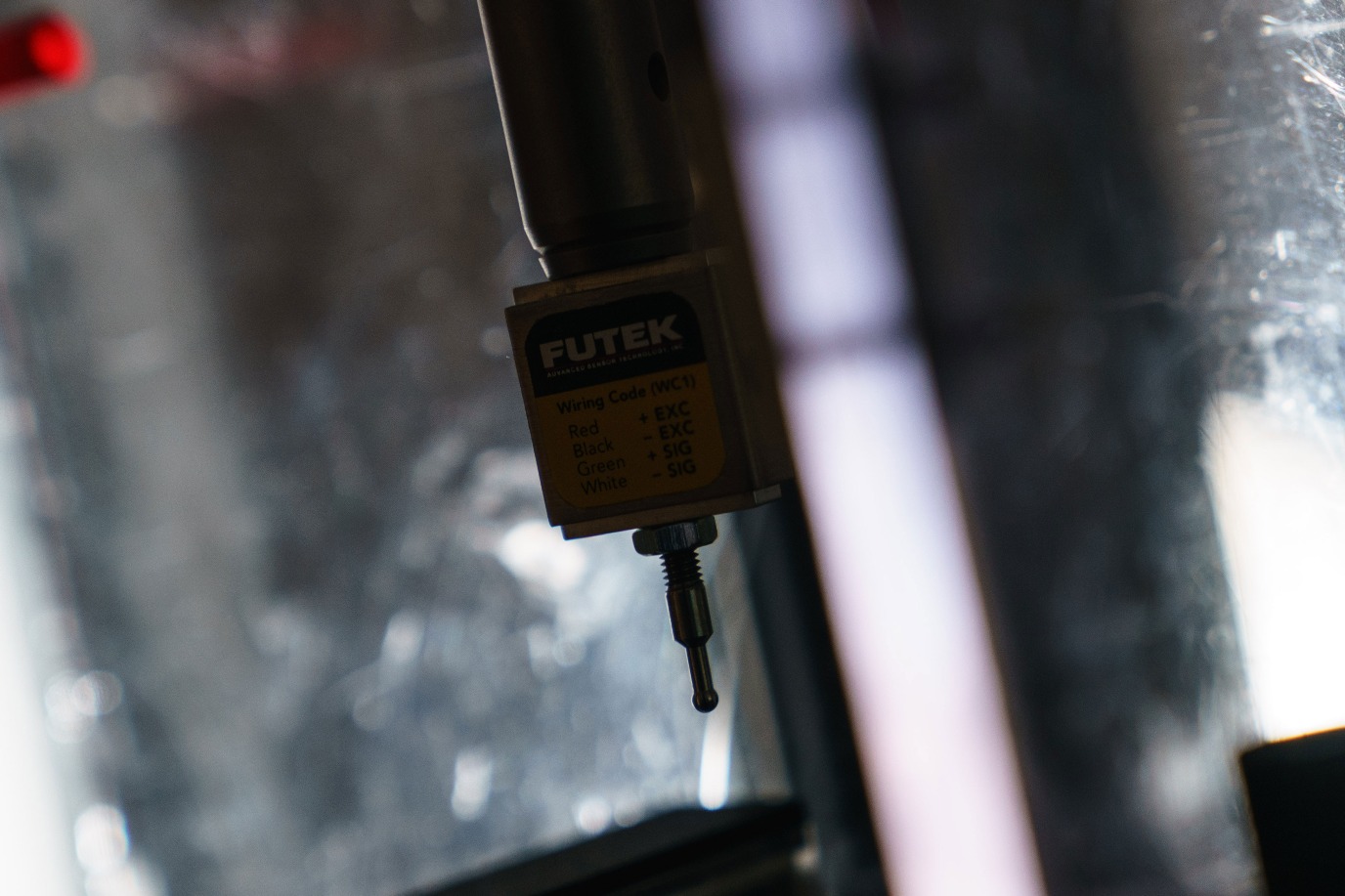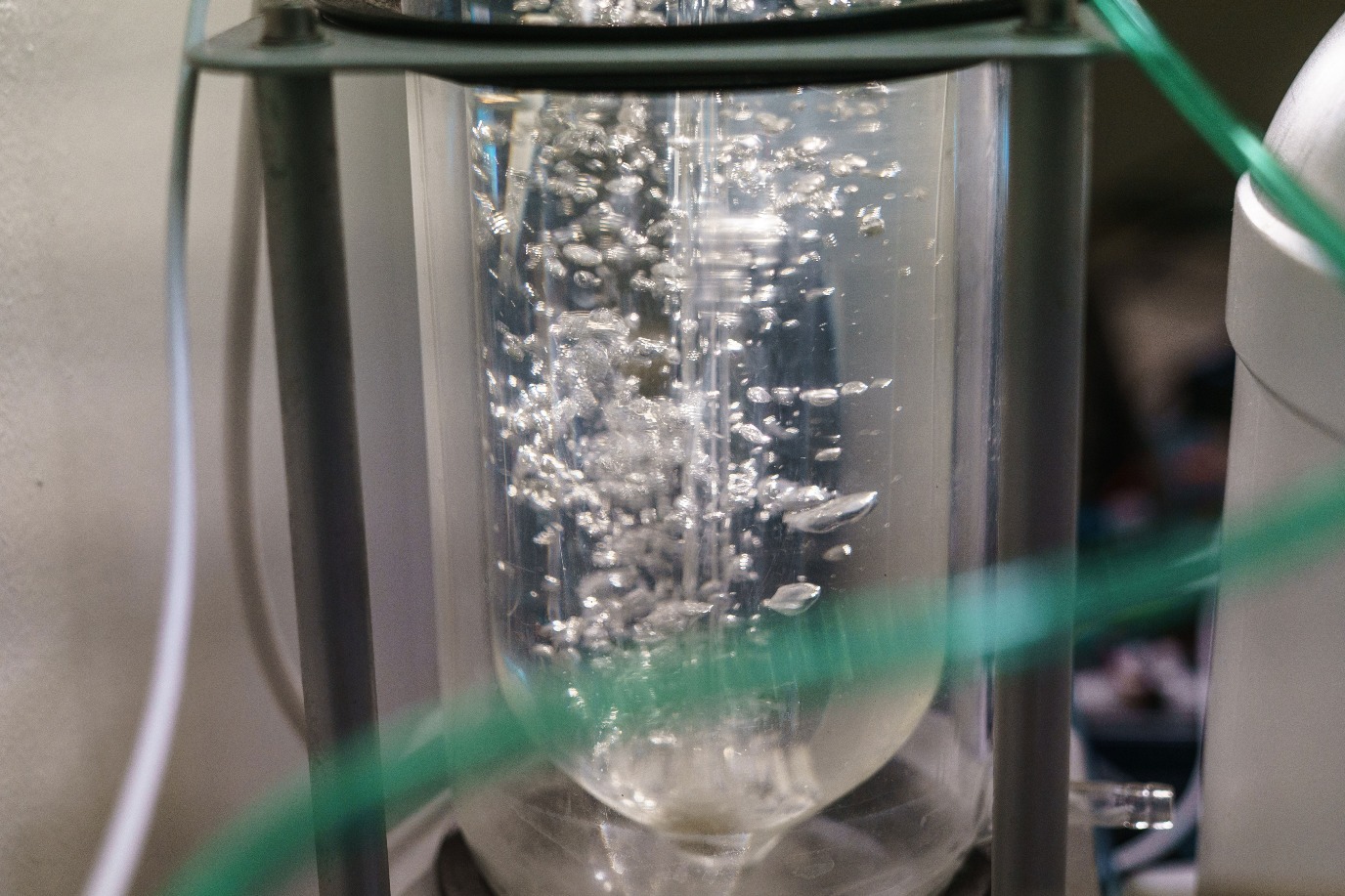Een plakkerigheidsmeter
Verschillende plantensoorten, van de gewone tomatenplant tot vleesetende zonnedauw, gebruiken kleine plakkerige druppeltjes om insecten uit te schakelen of aan te trekken. Deze druppels water die vol zitten met plakkerige moleculen zouden een ideaal gifvrij bestrijdingsmiddel tegen insecten kunnen zijn, dat bovendien gemakkelijk van eetbare planten is af te spoelen. Promovenda Abinaya Arunachalam probeert het ideale recept hiervoor te vinden. Maar hoe meet je de plakkerigheid van de verschillende kandidaten? Daar heeft Arunachalam zelf een apparaat voor gebouwd.




Zij werkt in de onderzoeksgroep van Marleen Kamperman, waar op de natuur geïnspireerde lijm een belangrijk onderwerp is. ‘De plakkerige substanties die planten gebruiken bevatten vooral suikers, maar zijn erg complex. Daarom proberen we het recept terug te brengen tot de belangrijkste ingrediënten.’ Om deze recepten te testen had Arunachalam dus iets nodig om de plakkerigheid goed te meten.
‘In de eerste maanden van mijn onderzoek gebruikte ik gewoon een vinger om een idee te krijgen van de plakkerigheid. Maar uiteindelijk kwamen collega’s van de Wageningen Universiteit, waarmee wij samenwerken, met een eerste ontwerp voor een meetapparaat’, vertelt zij. ‘Wij moesten het maken en we hebben het ontwerp daarbij nog flink aangepast.’ Het apparaat gebruikt een dunne ‘voeler’ die in de druppel wordt gedoopt. De kracht die nodig is om de voeler er weer uit te trekken is een maat voor de plakkerigheid van de druppel.
Een van de eerste aanpassingen was het toevoegen van een bevochtiger: als er water verdampt uit de druppels neemt de concentratie plakkerige suikers toe. Dit is ook een probleem voor de toepassing van de gifvrije insecticide die Arunachalam ontwikkelt. ‘Daarom richten we ons voorlopig op het bestrijden van insecten in kassen, waar de luchtvochtigheid gecontroleerd wordt.’
Arunachalam is opgeleid als chemisch ingenieur, en ze heeft allerlei nieuwe vaardigheden moeten leren voor het bouwen en gebruiken van de plakkerigheidsmeter. ‘Ik ben enorm geholpen door onze analist, maar de afgelopen jaren is mijn kennis van elektrotechniek en het coderen van software flink toegenomen. Ik ben nu in staat om zelf problemen met het apparaat op te sporen en te repareren.’
Foto’s: Reyer Boxem
Tekst: FSE Science Newsroom | René Fransen
In Makers van de RUG belichten we elke twee weken een onderzoeker die iets concreets heeft ontwikkeld: van zelfgemaakte meetapparatuur voor wetenschappelijk onderzoek tot kleine of grote producten die ons dagelijks leven kunnen veranderen. Zo dragen RUG-onderzoekers bij aan oplossingen voor grote wetenschappelijke en maatschappelijke uitdagingen.
Techniekonderwijs en -onderzoek maken bij de RUG al decennia deel uit van een breed palet aan sterke disciplines en landelijk werken we steeds intensiever samen met de vier technische universiteiten.
Eerdere portretten van 'Makers' vind je op de overzichtspagina .
Meer informatie
Abinaya Arunachalam
Meer nieuws
-
06 januari 2026
AI-phasie: kunstmatige intelligentie helpt bij taalgebrek
-
06 januari 2026
Beter zicht op de werkpaarden van ons lichaam
